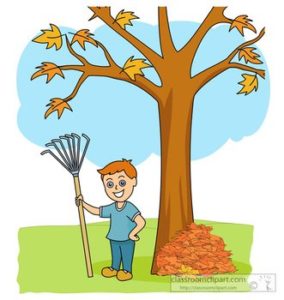![]()

As August ended and we were led kicking and screaming into Labor Day, the days were still hot and sticky, but the nights were getting colder. You may have noticed it’s starting to get darker earlier.
You also may have noticed, for some strange reason, you need to rake the back yard. As if 2020 could not get any more bizarre, my yard is starting to look more like the weekend before Halloween instead of the weekend before Labor Day.
Why are dead leaves all over Long Island in the middle of August? What’re we expecting next, frogs raining from the skies and a swarm of locust?
The south-facing side of trees and bushes were pelted with saltwater carried by the high winds from Tropical Storm Isaias, causing them to wilt and die. Trees and bushes went from green to brown almost overnight, but only on one side. Apparently, the wind carried plenty of salt, but because of the lack of rain, it never washed off.
“Isaias blew in from the south with a tremendous amount of ocean salt,” said Mina Vescera, a nursery, and landscape specialist from Cornell Cooperative Extension out of Suffolk County. “Without much rain,” she said, “It deposited damaging salt on tender leaves, what’s called “salt burn.”
Salt burn? Who knew there even was such a thing?
“It’s certainly made a lot of plants, especially on the southwest side, look pretty bad,” said Vescera. “But it is, for the most part, a superficial injury and unless the plant was in really bad shape, it’s likely that it will come back fine next year.”
It seems like this phenomenon was limited to Long Island shrubbery. We got blasted with high winds (and apparently a high salt content) but not a lot of rain. Maybe that’s why you should drink a lot of water and try and maintain a low salt diet. Who knows, perhaps that could be the reason you’re losing your hair?
Our neighbors from upstate and New Jersey, who were also hit hard by the winds of Isaias, aren’t digging into sheds to find their rakes though. According to Matthew Wunsch of the National Weather Service (New York Office), there was a simple explanation. They had more rain than us, which washed off the salt.
“We tracked the salt burn as far as 20 miles inland on Long Island,” Wunsch said, “If you get rain, it will tend to wash the salt away.”
My wife and I spent the better part of an hour clearing the dead leaves from our patio and gazebo this weekend. We have a lot of trees in the back yard and every fall, it becomes a nightmare to clean things up. We would routinely have close to 100 bags every season.
But raking leaves in August? That’s just nuts.
After learning about the salt burn phenomenon, I surveyed the trees on our property and sure enough, one side looked utterly dead while the other was thriving. Unfortunately for us, there are still plenty of dead leaves on the south side of our trees that haven’t fallen to the ground yet. Looks like most Long Islanders may have some more raking to do before we get to October.
Matt from the National Weather Service noted if a storm like Isaias comes calling again, we can wash the salt off the plants to prevent them from dying prematurely. Not sure how that is going to help with the trees, but it’s good news for the azalea bushes.
I guess there is a silver lining in all of this. We should have fewer leaves to rake when it does get into late October.